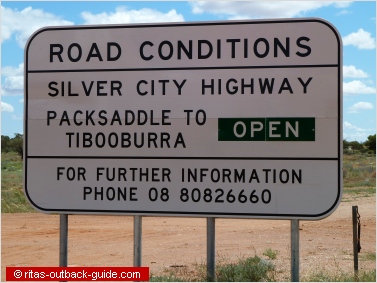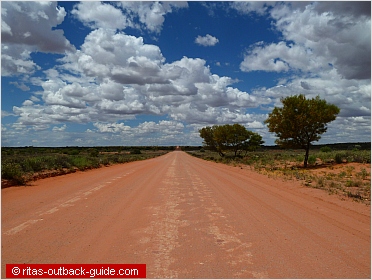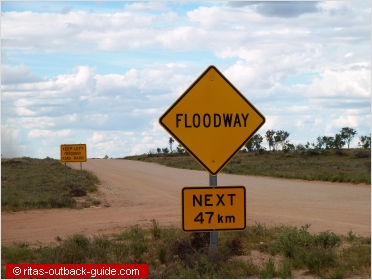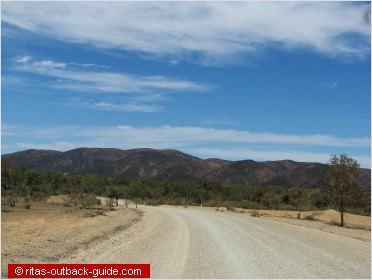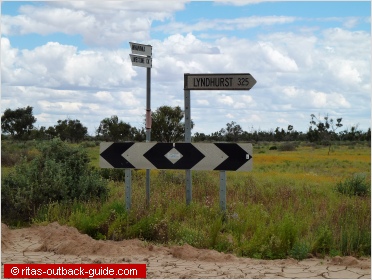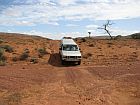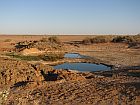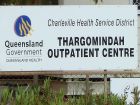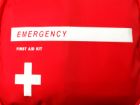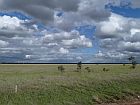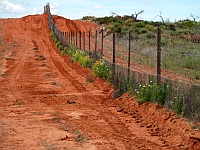
Outback Safety Tips & Facts
Be prepared for your Outback Australia travel experience
The tips and information in this Outback Safety section are not intended to scare you, far from it! However, it is important to prepare your driving adventure to the remote areas in Australia.
Are you a first time visitor to the Australian Outback? You have come to the right place. I am happy to help you plan your exciting dream journey. Find out what to expect before you start your travel expedition into the vast inland. Be prepared, and it will be the trip of your lifetime.
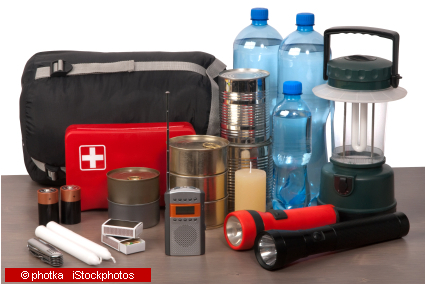
I have travelled the tracks and highways in the southern and eastern regions of the Outback, and I am glad to share my first hand experience with you. Anyone can discover the Outback on their own. It is not dangerous! Let common sense rule, and the Australian Outback is the safest place on earth to go.
You can explore the inland on sealed highways without any problems. Roadhouses and small towns line the roads at intervalls of 150 to 250 kilometres, and traffic is frequent around the year.
For example, travellers can drive to Uluru on sealed main roads from all capital cities on mainland Australia, no 4 WD is needed to reach the Outback's most famous attraction. It will be a long journey, though!
So, even if you're "just" travelling the main routes, driving distances are huge. Be sure you have a reliable car, take plenty of water, rest frequently and realise that it can get bloody hot in summer.
The tips on the Outback safety & driving pages are essential if you're planning to travel on the tracks, and perhaps do some detours into remote areas, in other words, if you really go "off the beaten track".
When your time is limited it is a good idea to have a rough itinerary to make sure you'll be back at the airport, or at home, in time. Australia is such a huge country, don't underestimate the driving distances anywhere in this country. Don't forget, speeding and Outback safety don't match.
Plan your trip well ahead and know what is worth to explore along the way. You don't want to come home after driving 3,000+ km to discover that you have missed a landmark you always wanted to see, do you? Always allow some extra time for a detour along the way.
Capital Cities
Accommodation
Special Interests
- General Facts
- Australian States
- Photo Gallery
- Climate & Bushfires
- Australian Wildlife
- Australian Opal
Rent A Campervan
How to plan a safe Outback trip?
- Get good maps to prepare your itinerary, and take them with you (The maps and the itinerary).
Hema offers a wide range of Outback maps and road atlases. - Don't make your schedule too tight. Allow yourself a few extra days, just in case somethings happens. A day of heavy rain, even 200 kms ahead of you, can cause a flash flood and road closure for a day or two. When this happens, sit back, relax, and explore the area where you are stuck. In the Australian sun it usually doesn't take long for a road to dry out.
- Avoid driving anywhere outside towns & cities in the dark. Kangaroos and emus love jumping across the roads, you won't see them in time at night. Arrive at your destination before dusk, and enjoy the stunning sunsets in the Outback.
- When you're going to very remote areas, give a reliable friend or family member your itinerary. Arrange with them intervals on which you're going to call them. If they don't hear from you they can hit the alarm button (alert authorities to search for you). See the communication section below.
- Always seek advice about road conditions and check the weather report before you head out on tracks. Ask at roadhouses, police station and fellow travellers about the situation on a track. Click here for a list of useful phone numbers.
- Do not drive on closed roads. There is always a reason (usually rain) when a track is closed. Driving on wet, unsealed road increases the risk of an accident. Plus, the fines are heavy when you get caught on a closed road.
- Permits - Always check if you need a permit for Aboriginal lands, or a pass for national & conservation parks.
Important Outback safety rules
- Emergency supplies - It is needless to say that you always need to carry enough water, the hotter it is, the more water you need.
4 to 5 litres per person and day is recommended, plus an extra amount for 4 days.
Take also some non-perishable foods with you that will keep you going when your trip is delayed for some reason. - When you have troubles with your car, never ever leave your vehicle. Sooner or later someone will come along who can either fix the problem or will notify a rescue service at the next town.
- Bush fires happen every year in Australia. Don't be the fool who starts one. In hot and windy weather be extremely careful with open fire, even with your cigarettes. On total fire ban days it is not even allowed to use a gas stove outside.
Fire bans apply in many regions from November to February, or March. Please get information from the media and the locals. Don't go bush-walking on days of high fire risk, it might be too hot anyway. - Australian wildlife - Yeah, there are a few critters in Australia that could harm you. Be informed, use common sense, and you don't need to worry about dangerous Australian animals.
How to make emergency calls or contact your family?
You can't rely on your mobile phone in the bush. The phone might work in small country towns, but hardly ever when you travel on remote tracks. So what will work out there?
Once you have settled your itinerary you know when you will arrive in small bush towns, at a road house to get fuel, or at caravan parks. In these places there is always access to a public phone (take some phone cards with you) to make your pre-arranged calls to family or friends. This is definitely the easiest and cheapest way to stay in contact!
But what about emergeny calls when you are travelling in remote areas?
- UHF CB (Citizens Band) Radio is useful when travelling in convoy. The range is usually 10 to 40 kms, depending on the terrain. Using repeater stations can extend the range. It is not the device to rely on in an emergency.
- Satellite Telephone are reliable, although they need a "line-of-sight". That means when you are surrounded by mountains, high trees, buildings etc, your phone might not connect with a satellite.
- High Frequency (HF) Radios work over far distances and are great to connect with a Flying Doctor base, other emergency services, and even with other travellers.
- Distress Beacons, also known as personal locator beacon, send a signal to international satellite system for search and rescue once they are activated. They should only be used in life-threatening situations. The downside of a beacon is that you can't talk with anyone for personal assistance. It also can take a while until a rescur team will reach you.
For more information and help to make a decison check out the following websites: Four Wheel Drive South Australia
VKS-737 Radio Network provides their members a license & service for HF radios and satphones.
When is the best time to visit the Outback?
The Australian Outback is a land of extreme heat. Especially in summer temperatures can go far over the 40°C (104 F) mark. Avoid travelling during the Aussie summer months, that is December, January, February. Apart from the heat, traffic on remote tracks will be next to nothing then. So you might have to wait a while for someone passing by when something goes wrong.
- Some destinations like the Simpson desert conservation park are closed in summer anyway.
- Remember that the northern parts of Australia have their wet season during summer. Many unsealed roads will be closed.
Autumn and spring are wonderful. Even winter has mild and sunny days in the inland, but the nights can be freezing cold, a fact to consider if you are camping. Check the Australian climate of your dream destination for the best time to visit.
Apart from general safety tips on how to prepare your journey, you will also find heaps of tour suggestions and beautiful destinations to visit in my Outback Guide.
Check out the Famous Routes and States sections in the top navigation.
